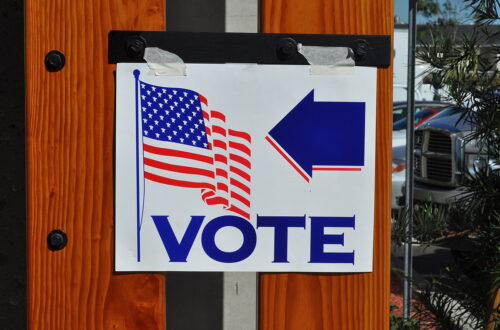The Federal Government Gave Billions to America’s Schools for COVID-19 Relief. Where Did the Money Go?
The Education Department’s limited tracking of $190 billion in pandemic support funds sent to schools has left officials in the dark about how effective the aid has been in helping students.
After the pandemic shut down schools across the country, the federal government provided about $190 billion in aid to help them reopen and respond to the effects of the pandemic. In the year and a half since millions of children were sent home, the Education Department has done only limited tracking of how the money has been spent. That has left officials in Washington largely in the dark about how effective the aid has been in helping students, especially those whose schools and communities were among the hardest hit by the pandemic.
“We’ve been in the pandemic now for nearly a year and a half,” said Anne Hyslop, the director of policy development at the education advocacy group Alliance for Excellent Education. “There is a responsibility to the public to make sure the funds are spent responsibly, but also make sure that the funding that is spent is accountable to supporting students and educators.”
Provisional annual reports submitted to the federal government by state education agencies underscored the dearth of clear, detailed data. Agencies classified how the funds were spent using six very broad categories, including technology and sanitization. According to a ProPublica analysis of more than 16,000 of the reports covering March 2020 to September 2020, just over half of the $3 billion in aid was categorized as “other,” providing no insight into how the funds were allocated.
In the absence of a centralized and detailed federal tracking system, the monitoring of relief funds flowing to the nation’s more than 13,000 school districts has largely been left to states. Some districts have been found to be spending their federal funds on projects seemingly at odds with the spirit of the aid program, such as track and field facilities and bleachers.
While such spending is not prohibited by the federal government, the stated goals of the relief program were to open schools safely to maximize in-person learning and, more broadly, to address the impact of the pandemic.
The Biden administration wants to collect more data. But its efforts have come more than a year after the previous administration began disbursing the relief funds, and some school districts have bristled at the belated push for more detailed data collection.
Hyslop said that while this may place an added burden on districts, the information is essential. “We need this data to make sure the needs are met, to make sure high-needs schools are not being shortchanged. … We have to make sure this is actually supporting students.”
The majority of the school aid was allocated from March 2020 to March 2021 and funneled through state education departments into K-12 school districts, which have until 2024 to budget the last of the funds.
Under the terms laid out by the federal government, states are responsible for developing tracking systems to ensure districts are spending the money on countering the effects of the pandemic.
The federal government has long given states considerable latitude in setting standards and curriculum. Christine Pitts, a fellow at the Center on Reinventing Public Education, said responsibility for tracking COVID-19 relief funds has similarly been delegated to the states, creating a patchwork of oversight practices. “There’s 50 states, and oftentimes in education that means there’s 50 different ways of doing the business,” said Pitts.
The federal government has started to request limited information from states on how districts have spent their funds. The department also requires spending plans from states, and those plans must be approved before the last round of funds is released.
These limited reporting requirements reflect the early, urgent days of the pandemic, when officials wanted to get money to school districts as quickly as possible.
In June 2020, as the first federal relief dollars were beginning to flow to districts, the office of inspector general of the Education Department warned in a report that the department must improve its oversight, monitoring and data collection to reduce potential fraud and waste. The OIG noted that after the 2007-2008 financial crisis, the Education Department was responsible for allocating $98 billion through the American Recovery and Reinvestment Act, which led to numerous investigations into abuse and waste.
When the OIG raised concerns last year to then-Deputy Education Secretary Mick Zais, Zais said the pandemic aid legislation itself had created “enormous pressure” to distribute funds quickly, according to an OIG report.
A spokesperson for the OIG, Catherine Grant, said that while distributing pandemic aid presented its own challenges, oversight and monitoring were “longstanding” issues for the department.
Luke Jackson, a spokesperson for the Education Department, said in an emailed statement that the department was working with states and districts to collect preliminary data to “to ensure federal funds are being spent to best serve the needs of students, educators, and school communities.”
The law places few restrictions on how districts can spend the federal aid, as long as the investments are loosely connected to the effects of the pandemic. This wide latitude has enabled districts to fund projects that some education experts have deemed questionable.
In Iowa, the Creston Community School District allocated about $231,000 of its pandemic relief funds to upgrade its outdoor stadium, including an expansion of its bleachers. According to district documents, the construction is intended to provide increased space for social distancing and to make the bleachers wheelchair accessible.
Creston’s superintendent, Deron Stender, did not respond to ProPublica’s requests for comment.
Last month in Pulaski County, Kentucky, the school board approved the reconstruction of its track and field facilities, allocating about $1 million in federal pandemic funding for the track replacement.
“We want to have facilities that are great for our students,” the district superintendent, Patrick Richardson, told a local paper after the project was approved. Richardson did not respond to ProPublica’s requests for comment.
“There is certainly a lot of flexibility on how the money can be used,” said Hyslop of the Alliance for Excellent Education, but said athletic investments are “not in the spirit of the law.”
The statement from Jackson, the Education Department spokesman, did not address a question from ProPublica about using relief funds for athletic projects.
In other cases, the spending priorities of school districts have drawn complaints from some parents. In Virginia, Fairfax County Public Schools spent more than $45 million of its early pandemic funding on ventilation systems and personal protective equipment. But some parents said that more federal aid should have been directed to services for students with special needs, who represent about 14.4% of the 178,000 students enrolled in the district.
Debra Tisler, a former special education teacher, said that her 15-year-old son, who has dyslexia, saw the 20 hours a month of specialized instruction that he received before the pandemic cut in half over the course of more than a year of virtual learning.
In January 2021, the federal education department opened up an investigation into Fairfax schools because of “disturbing reports involving the district’s provision of educational services to children with disabilities during the COVID-19 pandemic.” Asked on Tuesday about the status of the Fairfax investigation, the Education Department’s press office did not have that information readily available.
“They have the ability to do it and they are choosing not to. It’s heartbreaking,” said Tisler, who has had a contentious relationship with the district. In August, her son went back to school in person.
In the first two waves of pandemic aid from the county, state and federal governments, Fairfax schools received at least $157.5 million, of which it spent $9.6 million on direct services for students with disabilities to help them catch up, according to budget documents. Helen Lloyd, a spokesperson for Fairfax County Public Schools, said that much of the initial coronavirus relief funds paid for “systemwide technology, school safety mitigation measures and equipment and PPE costs.” She said it is not possible to calculate the proportion of the funding that paid only for services for students with disabilities.
Lloyd did not specifically address Tisler’s concerns, citing privacy protections, but the spokesperson said that the district’s spending plan was based on extensive community input and that learning loss was found to be a priority. She added that from the third wave of pandemic aid, which passed this year, the district has allocated $46.2 million, which is being used to extend the contracts of special education teachers by 30 minutes a day, and $500,000 to counter learning loss of students with disabilities.
In Texas, the McAllen Independent School District decided to spend $4 million of its education pandemic relief funds to construct a 5-acre outdoor learning environment connected to a local nature and birding center owned by the city. Tory Guerra, whose children attend McAllen’s schools, expressed concerns that the project, which will not be completed until December 2024, is not prioritizing the urgent learning needs of children who have been directly impacted by the pandemic.
“There are so many other programs that we could invest in that we could use immediately and see benefits immediately rather than years down the road,” Guerra said. She believes that the federal aid should directly address the pressing emotional and academic wellbeing of students, many of whom have struggled to keep up in the classroom. “Half the kids won’t even get to reap the benefit because the nature center isn’t even built.”
Mark May, a spokesperson for the McAllen independent district, said the cost of the project is a small fraction of the district’s $139.5 million in aid. He said the outdoor space will provide students with resources and experiences that will bolster children’s scientific knowledge.
Some states and districts have developed their own public reporting platforms. In Georgia, the education department built a dashboard that shows how much money each district has received and the programs they have spent it on. But other states have not offered as much visibility into districts’ spending. Indiana, for example, has so far made little information public, but it is currently developing an online portal.
In the provisional federal reports that categorize how aid money is spent, some of the largest districts in the nation marked all of their aid as going to the “other” category, including Los Angeles Unified, which spent $49.5 million, and New York City’s schools, which spent $111.5
Instead of spending the aid on summer school or technology, New York City’s district, the largest in the country, used its federal funds to plug a gap in its budget, which had been cut by the state. Katie O’Hanlon, a spokesperson for the district, told ProPublica that the district used the funds to cover the wages and operations of custodial workers. O’Hanlon said the district had followed state reporting requirements. J.P. O’Hare, a spokesperson for the New York State Education Department, said the state is using the “other” category until the federal government provides more direction on reporting requirements.
Shannon Haber, a spokesperson for Los Angeles Unified, said the district’s reporting was submitted based on the state’s requirements. Many districts categorized their spending as “other” initially, but as the school year progressed, the spending categories diversified, said Scott Roark, a spokesperson for the California Department of Education.
Even if the information is publicly available on a local level, the lack of standardization from state to state makes it impossible to get a national picture of how the funds are being directed.
Some experts said it may be too soon to get a larger view of how the aid was spent. “There’s going to be a natural lag between a district receiving the money, spending the money and reporting up to the state,” said Paige Kowalski, executive vice president for the education advocacy group Data Quality Campaign.
But other experts say that without real-time insight into district spending, schools will not be able to shift priorities if they find certain programs are working better than others.
“There can be an opportunity to do mid-course corrections, if we find something working well or not well,” said Dan Goldhaber, director of the Center for Education Data & Research at the University of Washington. “We will be in a bad place if we don’t have much evidence that $200 billion didn’t move the needle.”
This past July, the federal Education Department announced plans to increase its data collection from districts in 2022, but dozens of districts and state education agencies said that more oversight could leave them overburdened.
“It will take another block of time,” said Brenda Turner, the business manager of Haskell Consolidated Independent School District in central Texas, adding that her district already filed detailed plans to the state’s education department explaining how Haskell planned to spend its aid. “They need to figure out how to pull it out of their own system to report to the federal government instead of putting it on us.”
Has Your School Had a COVID Outbreak? Is Your District Following CDC Guidelines? Help Us Report.
As the Delta variant spreads across the country, ProPublica is reporting on the health and safety of students. Tell ProPublica whether your school is following CDC guidelines and whether any students, faculty or staff have gotten sick.Name *Email *Phone numberHow would you like to help our reporting?How would you like to help our reporting? *I have a specific story or concern to share.I work in or with schools and can volunteer my expertise.Are you over 18 years old?Are you over 18 years old? *YesNoSavedSUBMITPowered by CityBase.Expand
Jeff Kao contributed research.
Filed under —
Annie Waldman is a reporter at ProPublica covering education.
Bianca Fortis is an Abrams Reporting Fellow at ProPublica.


